ASUS F2A85-V Pro Review: A Look at FM2 with A85X
by Ian Cutress on October 10, 2012 11:20 AM EST- Posted in
- Motherboards
- Asus
- Trinity
- FM2
- A85X
ASUS F2A85-V Pro Software
The software package provided by ASUS is often cited by us as one of the best software packages with a motherboard, and this is still true on the FM2 socket and Trinity processors. The install CD is the same platform used by ASUS on their Intel products, with one menu for software and another for utilities. Each of these menus allows for a one-click ‘Install-All’ option, and clicking through allows users to deselect certain options that may not be relevant to them.
Within the software package, Daemon Tools Pro was installed by default. I have used Daemon Tools for years – it is a great piece of software for mounting disk images.
The main software package revolves around ASUS’ AI Suite. This software acts as an interface for the smaller additional programs that ASUS create for use on the motherboard.
ASUS AI Suite
The main bar of AI Suite splits the sub-programs up into groups, with two of the major utilities having their own buttons. In the case with the F2A85-V Pro this is the Auto Tuning option for overclocking and the Remote Go utility for media and file organization over network connections to tablets and smartphones. We will go through these in turn.
TurboV Evo
TurboV Evo is the operating system based overclocking tool provided. It allows for changes of all the important voltages and frequencies onboard, as well as providing the Auto Tuning options for ‘Fast’ and ‘Extreme’ overclock settings. I usually find TurboV Evo a good bit of kit when overclock testing, though I would like to put in some values by numbers rather than having to fiddle with sliders all the time.
DIGI+ Power Control
In order to give users better control over the power delivery, ASUS implements their DIGI+ Power Control on the FM2 boards as well. There are fewer options here than on some of their higher end Intel board offerings, but if a user wants to give more current capabilities or adjust load line calibrations through the OS for overclocks, the options are here for both the CPU/APU and the DRAM.
In a similar vein, we also have the EPU (Energy Processing Unit) menu and settings, designed to adjust and power gate different parts of the motherboard to save energy.
Fan Xpert 2
ASUS are well known in the motherboard space for using better fan controllers that the rest of the motherboard industry – typically one per fan header which is configurable within the BIOS and in software. The beauty of these fan headers lie in their independent control – the system has access to the RPM output and can adjust the speed on the fly. Pair that up with some software that actually can manipulate such a system and we have a nice fan configuration. The software behind this is Fan Xpert 2 – bundled as part of AI Suite, it will test all the fans in the system and provide RPM vs. Power applied graphs (as this relationship is rarely linear). This allows users to adjust the temperature/RPM curves as required – the only thing missing is the ability to apply hysteresis.
USB 3.0 Boost
As part of the ASUS methodology, we have onboard an ASMedia controller which can take advantage of the most up to date USB 3.0 transfer protocols. By attaching a compatible USB 3.0 device, and a click of the USB 3.0 Boost interface, the software will apply a driver over the standard ASMedia driver in order to enforce these under the hood commands. As we have shown in previous reviews, this affords a nice bump in the speeds provided at low transfer size workloads, making a USB device more tenable for everyday random access use rather than just storage. USB 3.0 Boost can also apply a modified driver to the chipset USB 3.0 ports for a similar boost using BOT protocols rather than UASP. (Note, this should become moot for Windows 8, where UASP will be a part of the standard driver package.)
Network iControl
For the past couple of years it has been clear that users in the motherboard industry would prefer the ability to manipulate the network ports onboard their system. While doing some epic downloading while playing a twitch FPS online is a little bit of an odd combination, using software tools in the OS to manage the priority of these programs is never a bad thing. On the ASUS side this comes in the form of Network iControl, and within this software the user can adjust the software that uses the Ethernet connections and rank them in order of priority. Alternatively the system can be left on automatic, and the program will use a series of pre-defined rules to prioritize a lot of the well known programs that typically rely on low-latency throughput.
Elsewhere in AI Suite we have advanced charging software in the form of AI Charger+ and USB Charger which will manipulate the current output of specific USB ports if the appropriate device is connected. This will help greatly with charging devices, using up to 1.5A rather than 300mA. I have been asked to test this feature in future reviews, and when I have an accurate setup I will start to test these charging features. Specifically AI Charger+ is for Apple products, and USB Charger is for other devices (Kindles, smartphones et al.).
ASUS also use their USB BIOS Flashback software here, allowing users to update the BIOS without having a CPU, Memory or VGA connected. This is a feature that helps protect the product in case new CPUs are released and microcode updates are needed. If a user buys a board that is not compatible with their processor, in the past an older processor had to be found in order to update the BIOS. This is no longer the case with USB BIOS Flashback.


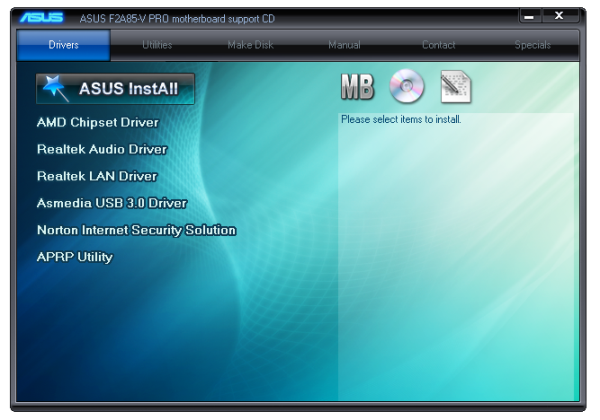
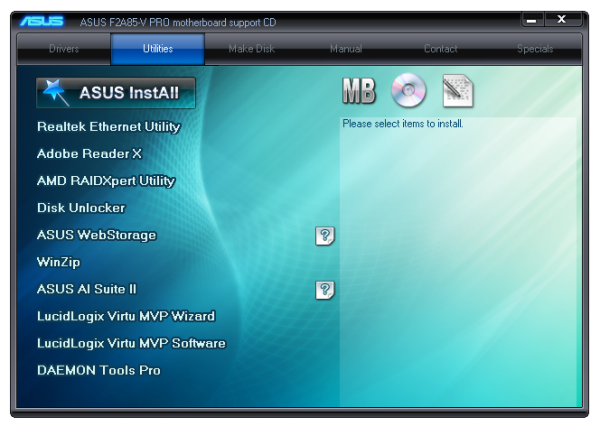

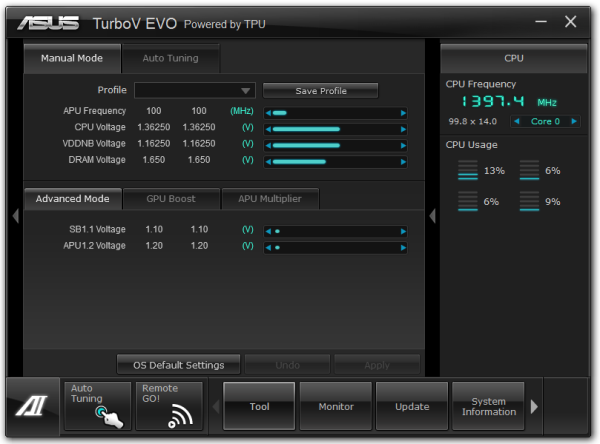
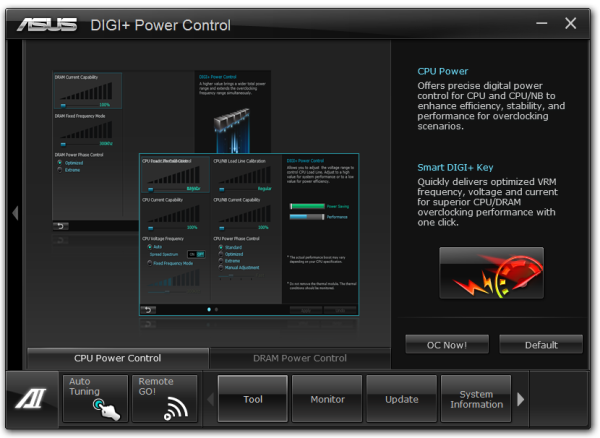
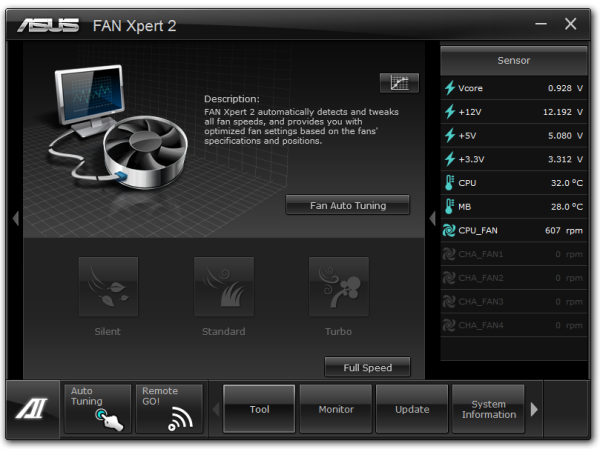
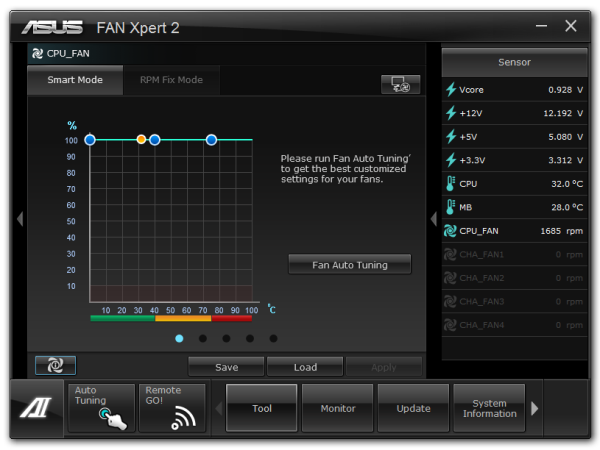
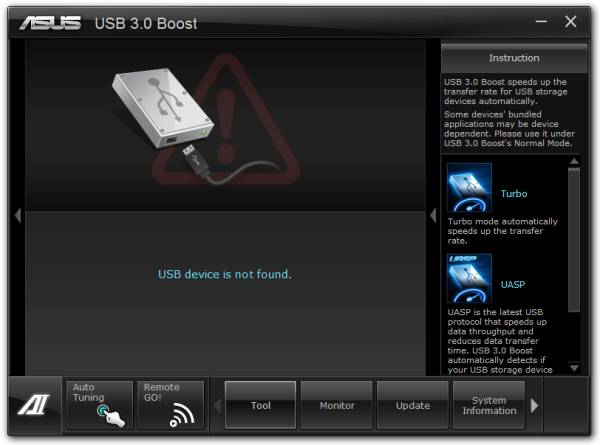














66 Comments
View All Comments
cjs150 - Friday, October 12, 2012 - link
Except for the complete power users I am not sure full ATX makes sense for the vast majority of people no matter what CPU you use.mAtx has room for 4 PCI-E/PCI slots. even if the GPU takes up 2 slots what do people use the rest for? Sound card, TV tuner then what? [If any one says RAID card - why do you need a discrete GPU for what is effectively a NAS]
Having just built an HTPC using a mini-ITX board it is remarkable what power you can have on tap with just one PCI-E slot
groundhogdaze - Saturday, October 13, 2012 - link
Yea, full ATX is making less and less sense these days. My main system is full sized but most of the systems I own are ITX or smaller. I just slapped together a HTPC using a Cooler Elite120 ITX case, an old GTX-560ti video card,16gb of RAM and an i3-2100 CPU so it double duties as a Home Gaming Theater as well. It is awesome how much power one can squeeze into a small system these days.vkristof - Saturday, October 13, 2012 - link
I'd have some interest in the AMD combo if it could drive 3 displays.If it can, what are the limitations?
Teknobug - Monday, October 15, 2012 - link
Looks like I'm going with the i5 3570K and P8Z77 board combo this time around and I've been a long time AMD user since the late 90's, I was highly interested in the A10 5800K but the benchmarks look ridiculous, especially the gaming benchmarks.Shadowmaster625 - Monday, October 15, 2012 - link
"On AMD the results are better, making the GPU the limiting factor." Please find this sentence in your article and review it for possible errors. After all, how can anything be better on AMD? lol. Seriously I think you meant intel.markcomp - Sunday, March 24, 2013 - link
OK, a lot of this is right on the edge of my understanding, and as I was about to put together another PC for my kids, the intro on board specs, chipset etc has just got me a bit confused.I was not looking at a Trinity as the budget won't stretch that far, but had come up with the following (actually the boys 13 and 15 did most of the research):
Will they work well together, and is there a better combination for the price (or less).
Sadly over here in The UK, we can’t get the deals like you folks across the big pond and this lot comes to £450 ($685):
Processor £100
Mobo and graphics card £150 each approximately
AMD Piledriver FX-6 Six Core 6300 Black Edition 3.50GHz (Socket AM3+) Processor
Asus Sabertooth 990FX AMD 990FX (Socket AM3+) DDR3 Motherboard
(how is this different from the R2.0 version)
One of the following:
Sapphire HD 7850 2048MB GDDR5 PCI-Express Graphics Card
Sapphire HD 7850 OC Edition 2GB Dual DVI HDMI DisplayPort PCI-E Graphics Card
Asus HD 7850 DirectCU II V2 2048MB GDDR5 PCI-Express Graphics Card
In retrospect, this should perhaps be a forum post, but having got this far....
Thanks anyway - what a good site, glad I found it